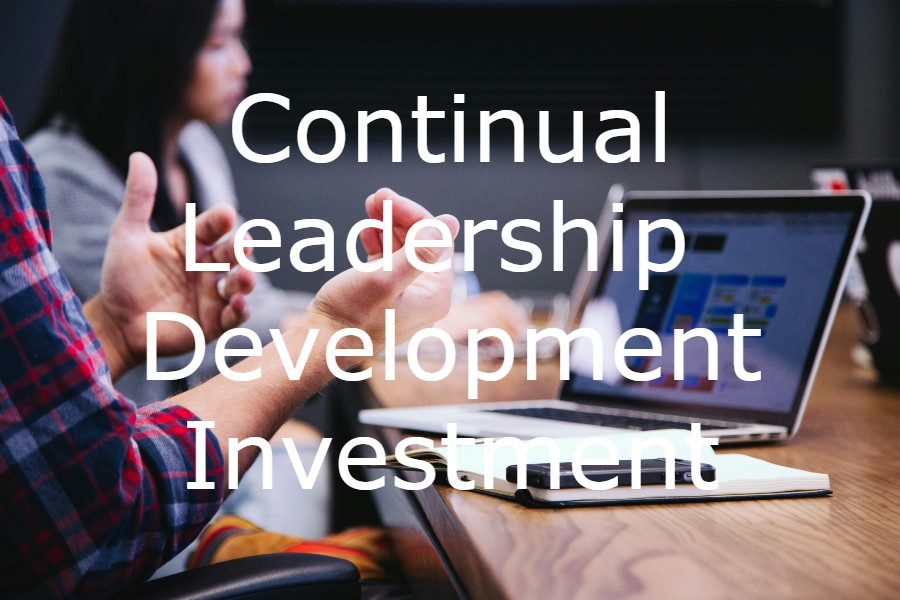The Importance of Continual Leadership Development
Introduction: The Evolving Role of Leadership
Leadership is not a static skill set but a dynamic and evolving discipline. As the global business landscape becomes increasingly complex, the role of leaders has expanded to include a broader range of responsibilities and competencies. Today’s leaders must navigate rapidly changing markets, technological disruptions, and diverse workforces. Continual leadership development is essential to keep pace with these changes and ensure that leaders remain effective, adaptable, and capable of driving their organizations forward.
The Changing Nature of Leadership Challenges
In the past, leadership was often associated with a command-and-control style, where leaders were expected to have all the answers and make decisions unilaterally. However, this approach is no longer effective in the modern business environment. Today’s challenges require leaders to be more collaborative, empathetic, and innovative.
Complexity and Uncertainty
One of the defining features of the modern business environment is complexity. Leaders are now required to navigate a world of interconnected systems, where a decision in one area can have far-reaching consequences. Additionally, the pace of change has accelerated, creating an environment of uncertainty where leaders must be prepared to make decisions with incomplete information.
Globalization and Diversity
Globalization has brought new opportunities but also new challenges for leaders. Managing a diverse workforce spread across different geographies requires a deep understanding of cultural differences and the ability to foster inclusive environments. Leaders must also be aware of global trends and how they impact their organizations.
Technological Disruption
The rapid advancement of technology has transformed the way businesses operate. Leaders must stay ahead of these changes by continually updating their knowledge and skills. This includes understanding the implications of emerging technologies like artificial intelligence, big data, and automation.
The Need for Ethical Leadership
As organizations come under greater scrutiny from the public, regulators, and other stakeholders, ethical leadership has become increasingly important. Leaders must not only act with integrity but also create a culture of ethics within their organizations. This requires ongoing development in areas such as corporate governance, social responsibility, and ethical decision-making.
The Benefits of Continual Leadership Development
Continual leadership development offers numerous benefits for both individual leaders and their organizations. These benefits include improved decision-making, enhanced adaptability, increased employee engagement, and better organizational performance.
Improved Decision-Making
Leaders who engage in continual development are better equipped to make informed decisions. They are more likely to stay up-to-date with industry trends, understand the latest management theories, and have access to a broader network of peers and mentors. This knowledge and support system enables leaders to make decisions that are not only timely but also strategically sound.
Enhanced Adaptability
The ability to adapt to change is a critical leadership skill. Continual development helps leaders build resilience and flexibility, allowing them to pivot when necessary and lead their organizations through periods of transformation. Leaders who are committed to their development are more likely to embrace change rather than resist it.
Increased Employee Engagement
Leadership has a direct impact on employee engagement. Leaders who prioritize their development are more likely to create positive work environments, foster open communication, and inspire their teams. This leads to higher levels of employee satisfaction, productivity, and retention.
Better Organizational Performance
Ultimately, continual leadership development contributes to better organizational performance. Organizations with strong leadership are more likely to achieve their strategic goals, navigate challenges effectively, and maintain a competitive edge. By investing in their leaders, organizations are investing in their long-term success.
Key Components of Continual Leadership Development
Effective leadership development is not a one-size-fits-all approach. It requires a combination of formal education, experiential learning, and ongoing self-reflection. Here are some key components of a robust leadership development program:
Formal Education and Training
Formal education, such as executive education programs, workshops, and certifications, provides leaders with the foundational knowledge they need to succeed. These programs cover a wide range of topics, from strategic management to leadership psychology. They also offer opportunities for leaders to learn from experts in the field and connect with peers.
Experiential Learning
While formal education is important, experiential learning is where leaders truly develop their skills. This involves learning through experience, such as taking on new projects, leading cross-functional teams, or working in different regions. Experiential learning allows leaders to apply what they’ve learned in real-world situations, making the lessons more tangible and memorable.
Mentoring and Coaching
Mentoring and coaching are powerful tools for leadership development. A mentor can provide guidance, share their experiences, and offer a different perspective on challenges. Coaching, on the other hand, focuses on helping leaders develop specific skills and achieve their goals. Both mentoring and coaching provide leaders with valuable support and feedback, which are essential for growth.
Self-Reflection and Assessment
Continual leadership development requires leaders to engage in regular self-reflection and assessment. This involves evaluating their strengths and weaknesses, setting development goals, and seeking feedback from others. Self-reflection helps leaders stay aware of their progress and identify areas where they need to improve.
Peer Learning and Networking
Learning from peers is an important aspect of leadership development. Peer learning can occur through formal programs, such as leadership cohorts, or informal networks. By sharing experiences and best practices, leaders can learn from each other and build a supportive community. Networking also provides opportunities for collaboration and partnerships, which can be beneficial for both personal and organizational growth.
The Role of Organizations in Supporting Continual Leadership Development
Organizations play a crucial role in supporting the continual development of their leaders. This involves creating a culture of learning, providing resources for development, and recognizing and rewarding leadership growth.
Creating a Culture of Learning
A culture of learning encourages leaders at all levels to prioritize their development. This can be achieved by making learning a core value of the organization, promoting continuous improvement, and celebrating learning achievements. When learning is embedded in the organizational culture, leaders are more likely to engage in development activities and apply what they’ve learned.
Providing Resources for Development
Organizations should provide the necessary resources for leadership development. This includes offering access to formal education programs, providing opportunities for experiential learning, and supporting mentoring and coaching relationships. Organizations can also invest in leadership development platforms and tools, such as learning management systems, to facilitate ongoing development.
Recognizing and Rewarding Leadership Growth
Recognition and rewards are important motivators for leadership development. Organizations should acknowledge and celebrate leaders who demonstrate a commitment to their growth. This can be done through promotions, performance bonuses, or public recognition. By rewarding leadership development, organizations reinforce the importance of continual learning and encourage others to follow suit.
Overcoming Challenges in Continual Leadership Development
While the benefits of continual leadership development are clear, there are also challenges that organizations and leaders may face. These challenges include time constraints, resource limitations, and resistance to change.
Time Constraints
One of the biggest challenges in leadership development is finding the time for it. Leaders are often busy with their day-to-day responsibilities, leaving little time for development activities. To overcome this challenge, organizations can offer flexible development options, such as online courses, micro-learning sessions, and just-in-time learning resources. Leaders can also be encouraged to prioritize their development by setting aside dedicated time for learning and growth.
Resource Limitations
Resource limitations can also be a barrier to leadership development. Smaller organizations may not have the budget to invest in expensive training programs or hire external coaches. However, there are cost-effective ways to support leadership development, such as leveraging internal expertise, offering peer learning opportunities, and using free or low-cost online resources. Organizations can also partner with external providers to share the cost of development programs.
Resistance to Change
Resistance to change is a common challenge in leadership development. Some leaders may be reluctant to engage in development activities, either because they believe they don’t need it or because they are uncomfortable with change. To address this challenge, organizations should communicate the benefits of continual development and create a supportive environment for learning. This includes providing opportunities for leaders to experiment with new ideas, make mistakes, and learn from them.
The Future of Leadership Development
As the world continues to change, so too will the demands on leaders. The future of leadership development will likely involve a greater emphasis on adaptability, emotional intelligence, and ethical leadership. Organizations will need to be proactive in developing these skills in their leaders to remain competitive and successful.
Adaptability and Resilience
In an increasingly volatile and uncertain world, adaptability and resilience will be critical leadership skills. Leaders will need to be able to pivot quickly in response to changing circumstances, recover from setbacks, and lead their teams through difficult times. Continual development will help leaders build these skills and stay prepared for whatever challenges come their way.
Emotional Intelligence
Emotional intelligence (EI) will continue to be a key component of effective leadership. Leaders with high EI are better able to understand and manage their own emotions, as well as the emotions of others. This enables them to build strong relationships, foster collaboration, and create positive work environments. As organizations place greater emphasis on employee well-being and mental health, leaders with high EI will be in high demand.
Ethical Leadership
Ethical leadership will become increasingly important as organizations face greater scrutiny from stakeholders and the public. Leaders will need to navigate complex ethical dilemmas, make decisions that align with their values, and create cultures of integrity. Continual development in areas such as ethical decision-making, corporate governance, and social responsibility will be essential for leaders to meet these expectations.
The Role of Technology in Leadership Development
Technology will play a significant role in the future of leadership development. Advances in artificial intelligence, machine learning, and data analytics will enable more personalized and targeted development experiences. Virtual reality and augmented reality will provide immersive learning opportunities, allowing leaders to practice their skills in realistic scenarios. Technology will also facilitate greater access to development resources, making it easier for leaders to learn anytime, anywhere.
Conclusion: The Ongoing Journey of Leadership Development
Leadership development is not a one-time event, but an ongoing journey. As the world continues to evolve, leaders must continually update their knowledge, skills, and mindsets to remain effective.










